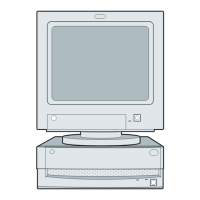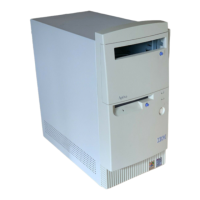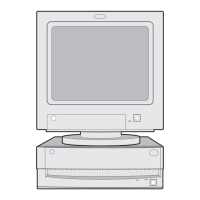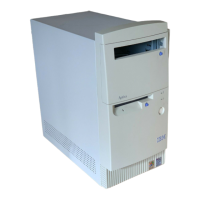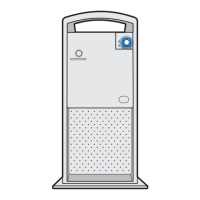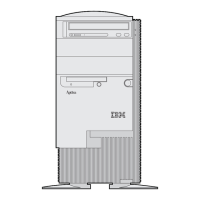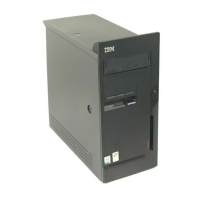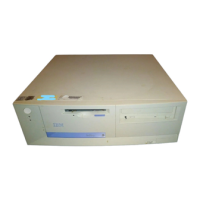General Information 17
Disk Drives
If you install a new diskette, hard disk, or CD/DVD-ROM drive, BIOS auto-
detects the presence of these devices. Enter Setup to identify or verify the type
of drive installed in the computer.
If you want to change any drive setting, select Disk Drives from the main menu.
The Disk Drives menu appears showing the diskette drive and IDE drive
parameters.
Floppy Drive A
This option displays the size and storage capacity of the currently installed
diskette drive. Empty drive bays are indicated with a “None” setting.
LS-120 Drive As
This option allows user to set for the LS-120 drive. Empty drive bays are
indicated with a “Normal” setting. Its possible settings are:
Normal
The LS-120 drive is configured by Windows 98 and acts as an ATAPI
removal media.
Drive A
System recognizes the LS-120 drive as drive number 0 (drive A). If a
standard diskette drive A exists, system automatically identifies it as drive B.
Drive B
System recognizes the LS-120 drive as drive B.
ATTENTION:
If “Boot Sequence” in “Startup Options” is set to CD-ROM and a
bootable CD is loaded, BIOS identifies LS-120 (original set as drive A)
as drive B and the standard diskette drive becomes inaccessible.
IDE Hard Disk and CD/DVD-ROM Drives
The Disk Drives menu includes four IDE drive items that allow you to configure
the hard disk drives and the CD/DVD-ROM drive. Selecting any one of these
items displays a submenu with details on a particular IDE drive.
The IDE drive items are identified as follows:
•
IDE Primary Channel Master is attached to IDE connector 1 on the syste
board and is set as the master device. This is the hard disk that comes
preinstalled with your computer.
•
IDE Primary Channel Slave (if installed) is attached to IDE connector 1 on
the system board and is set as the slave device.
•
IDE Secondary Channel Master (if installed) is attached to IDE connector 2
on the system board and is set as the master device.
•
IDE Secondary Channel Slave (if installed) is attached to IDE connector 2
